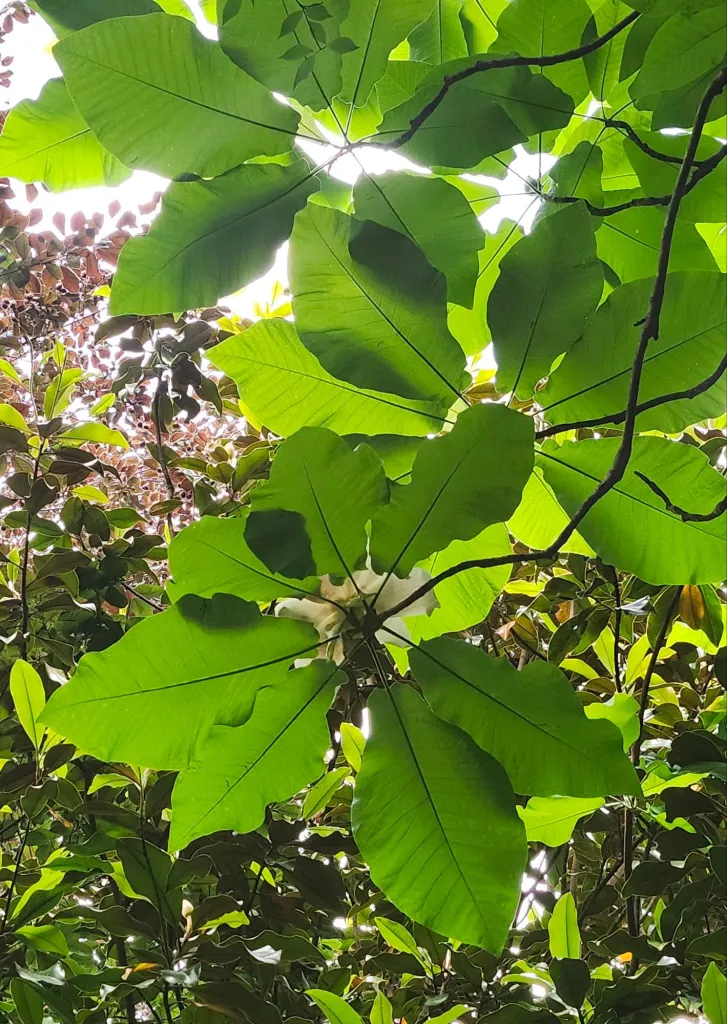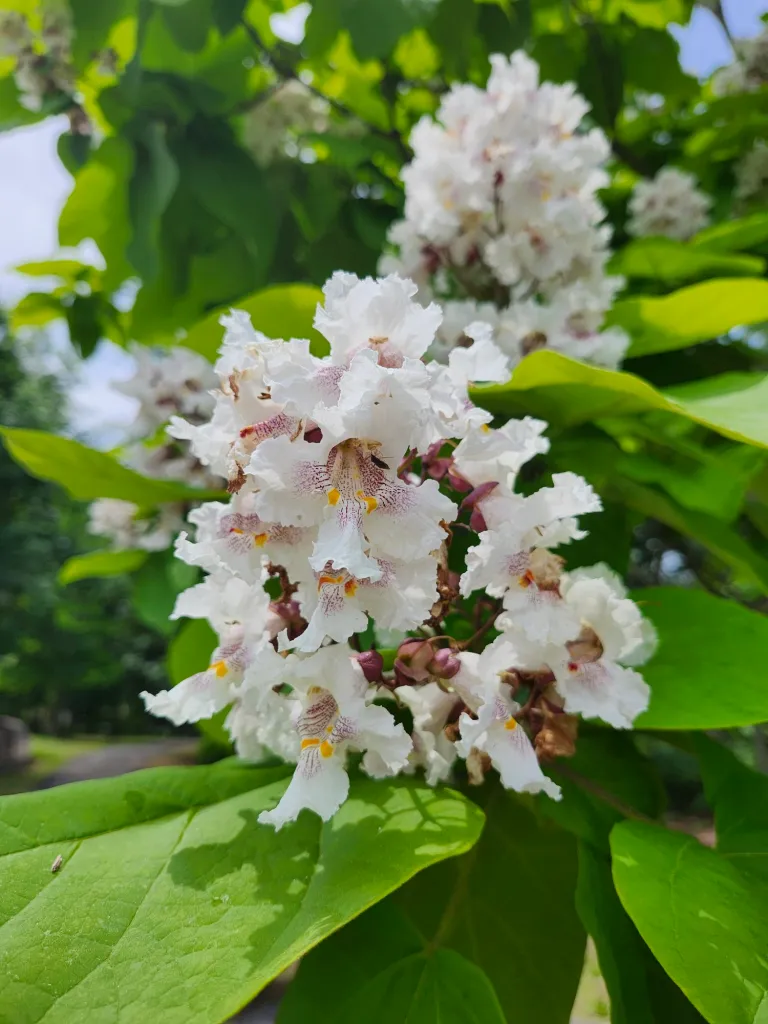How fortunate that the garden where I volunteer has two trees with flowers that will not be seen in this garden. The Bigleaf magnolia (Magnolia macrophylla, below) in my garden was obtained years ago from the nursery of a longtime acquaintance in Tennessee. The magnolia, ten feet tall and one-of-its-kind in this nursery and a rare find in any, stood out above a field of shrubs, possibly forsythia, though it could have been year old trees only knee high but hidden in the tall weeds.

This nursery visit will forever be remembered as Michael (the nursery owner) backed his pickup over a row of small dogwoods in a weedy field that was long overdue for mowing. The conversation that preceded the thunk, thunk, thunk as we backed over dogwoods resulted in a chorus of I-told-you-so from my traveling partner and me. Thereafter, Michael was annually reminded, laughing along as the years passed. On a brighter note, an immediate order was placed to deliver the tree once it turned towards late autumn dormancy.

The bigleaf was the first of handfuls of trees planted in the side garden at the time when open space was plentiful. Yes, I was aware that the magnolia would become a large tree, but it grows as an understory tree and for several decades, lower branches remained so that the huge leaves and flowers could easily be seen. But then, a branch was lost, then another, and a few years ago, the last lower branch perished.

Today, the lowest branch and flowers are twenty feet above (above). The magnolia is in fine health, but the amazing sight of flowers and foliage is no longer a close encounter. Memories of bumping through fields of trees in Tennessee will be cherished forever.
And so, back from memory lane, I am so pleased to share the bigleaf magnolia’s flowers with fellow volunteers who have also had to suffer (as you have) through my recollections. Two magnolias planted in a parking lot berm will have adequate space so that lower branches should never be endangered.

The Catalpa (Catalpa speciosa, above) will not flower in my garden. At least, that’s the plan. I once grew the potentially invasive Princess tree (Paulownia tomentosa) in the rear garden near the house but chopped it to the ground every year. This resulted in rampant growth and the huge leaves I wanted, but no flowers (and thus no seedlings). But, with increasing vigor as the roots spread but the tree stayed small, this became prime evidence of wrong tree, wrong place. Eventually, I had enough, and it was dug out, but I was tempted to plant another where there was more room.

Instead, to provide some evidence that I am not a complete idiot, I opted to plant a native catalpa with flowers comparably as lovely as the paulownia’s and leaves that are nearly as large. The catalpa was allowed to grow a few years to establish its roots, and then it was cut to the ground in late winter. Again, pruning the tree will eliminate the possibility of flowering, but large leaves are the plan. This is a multi year project, so I don’t expect the best right away, but it’s looking good, and I can share the blooms of catalpas at the garden with the other volunteers.
In any case, I apologize for boring you with overly long recollections, but the flowers of both trees are glorious, even if I have to drive to see them.
I have 5 Catalpa’s love them. Brought home from Grandma’s in Star Junction PA as seedlings. I planted them until they were 4 foot tall then cut the top off and cut the tap root then again at 8 feet, now they are 20 foot tall and on their own.
Mine will soon be once again covered in gorgeous blooms.
I am fortunate to volunteer at a botanic garden where I can enjoy several trees that there is no room for in my garden.
These can get enormous which is why I did so many moves with them and trimming them. We have wonderful gardens here in New England where wonderful trees reside, I just never found a Catalpa.
There’s rom at the border of the garden for catalpa to grow, but I want the huge leaves. Someday, I’m likely to let it grow.
My leaves are huge, and it is in full bloom today and it smells so nice here.
My experience with Paulownia is that leaves grew 50 percent larger. I hope for the same with catalpa.